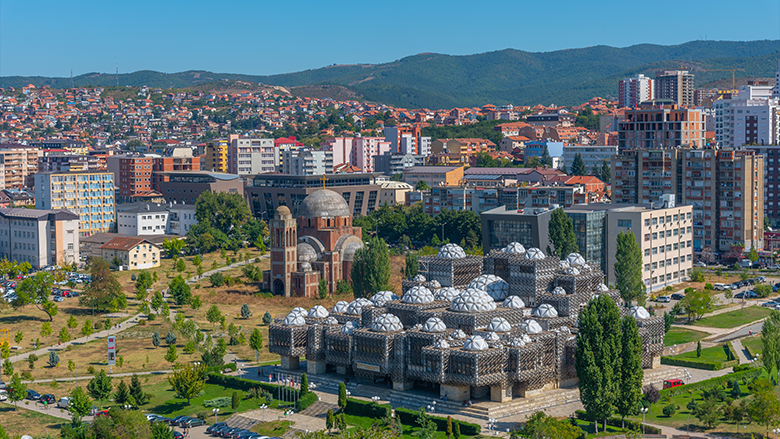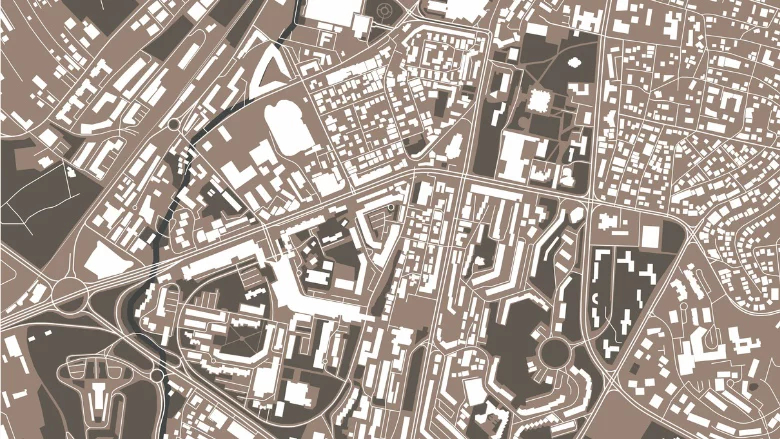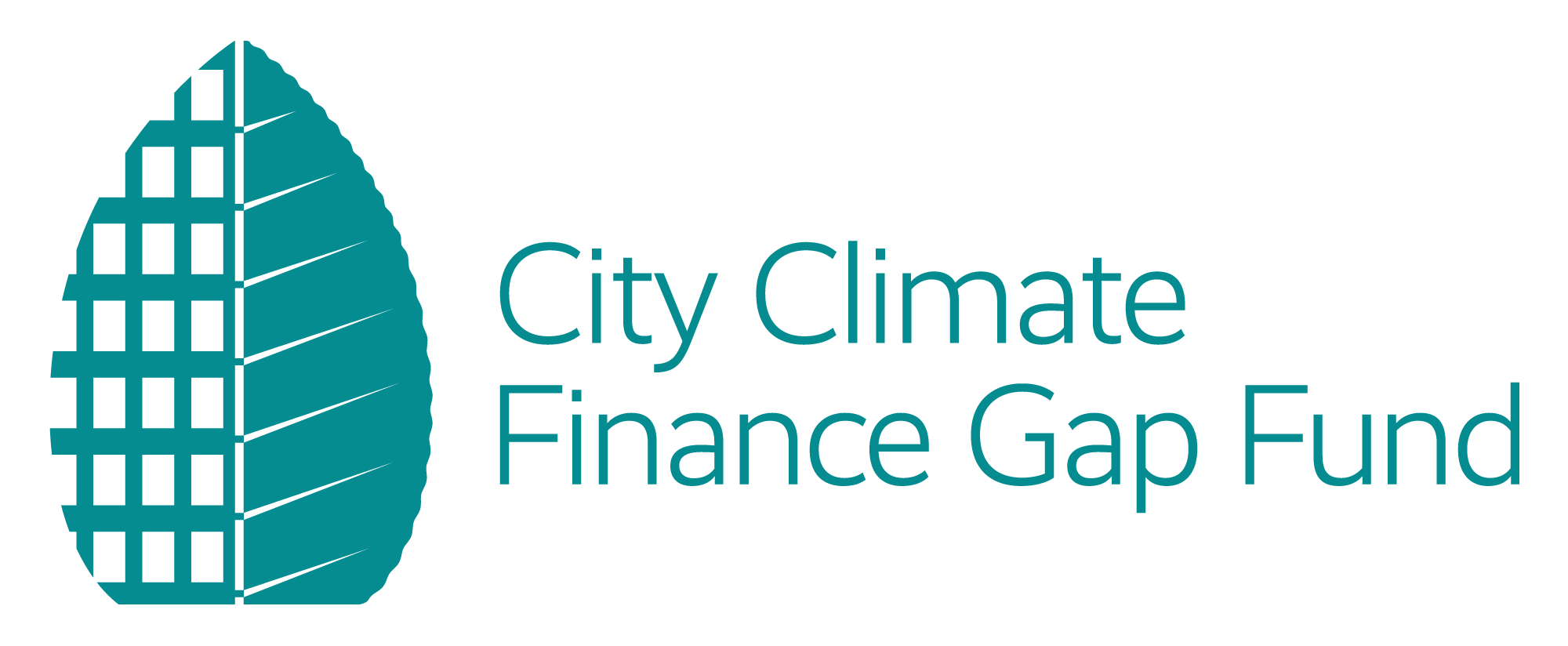Building cleaner, greener, more livable cities: Pristina – a blueprint for transforming urban development

The City Climate Finance Gap Fund
Since its inception in September 2020, the City Climate Finance Gap Fund (the Gap Fund) has approved technical support for 95 cities in 36 low- and middle–income countries globally to transition towards low-carbon and climate-resilient pathways, in line with the United Nations Framework Convention on Climate Change (UNFCCC) global target to limit temperature increases to 1.5°C above pre-industrial levels. So far, the initiative has mobilised more than 7 million Euros in technical assistance (TA) grants to transform urban climate ambitions into finance-ready projects. As part of the Gap Fund’s ongoing commitment to support cities globally, it aims to unlock 4 billion Euros in climate-smart investments.
Pristina
Pristina was among the first cities globally to receive technical assistance from the Gap Fund. With challenges similar to those other cities around the world face, the capital of Kosovo has grown rapidly, from being home to around 109,000 people in 1981, to now having an official population of about 220,000 or even more if considering daily and weekly commuters and temporary residents with families living elsewhere in Kosovo.
However, despite good progress on upgrading the city’s infrastructure and public amenities, today only 28% are connected to the district heating network. Air pollution is a significant challenge for the city, due to emissions from two coal-fired power plants, individual household heating systems based on solid fuels (firewood and coal) and a polluting and obsolete vehicular fleet. Congestion and flooding are also significant challenges and, like many other cities, COVID-19 had a strong and negative impact on Pristina’s economy and municipal finances.
Achieving climate resilience and sustainable urban transformation: a holistic approach to city planning
During an 18-month Gap Fund initiative from January 2021 to June 2022, technical assistance has helped Pristina’s Office of the Mayor, Deputy Mayors, and officials in the city’s departments of Urban Planning, Public Services and Strategic Planning to work together to better plan, design and invest in the city’s green development and achieve its climate goals.
The Gap Fund supported training and technical assistance to city officials to review the urban planning, transport and energy investment and policy decisions outlined in Pristina’s draft Municipal Development Plan (MDP) through the “Urban Performance” tool. The objective of the review is to gauge whether investments and policy decisions are climate-smart, can drive sustainable urban development and support the wellbeing of its people.
As a results, local leaders gained the skills and insights necessary to identify alternative policies and investments in energy, transport and urban planning that will help Pristina transition to a low carbon, climate-resilient city by 2040. For example, modelling work undertaken indicated that in 2020, Greenhouse Gas (GHG) emissions for the city were 1,677 (kgCO2eq/capita/annum) and that those could increase to 2,201 (kgCO2eq/capita/annum) by 2040 if no countermeasures are taken. However, by implementing a set of supportive urban planning, transport, and energy policies and investment measures, the city could cut its emissions to 167 (kgCO2eq/capita/annum) by 2040.
Key recommendations that emerged from the analysis point to the need for:
- Managing urban sprawl — as a denser city will curb Pristina’s environmental impact and result in more efficient transport and energy investments. The municipality is in the process of revising the draft MDP in order to reduce the pace and scale of urban expansion;
- Creating more mixed use development, to cut GHG emissions by reducing the time and distance people needed to travel between work, home and essential facilities;
- Supporting people’s wellbeing by building more social infrastructure, including parks, recreational areas, clinics and kindergartens, in well-connected areas where these facilities are currently lacking;
- Supporting the integration of land use and transport planning – including designing and adapting streets and neighbourhoods to better link them to public transport networks and locating planned schools, clinics and hospitals in high-density areas that are, however, currently under-resourced with these amenities;
- Developing low-carbon, public transport corridors by investing in more bus services linking Pristina to other urban areas in the metropolitan region and economic hubs, and funding high-quality pedestrian walkways and cycle routes in the city;
- Improving co-ordination in the planning and provision of different public transport services;
- Expanding the district heating network and supporting a transition to clean, domestic energy, by investing in energy efficient heating systems, district heating systems and heating units that use non-polluting fuels;
- Implementing the Local Green Building code to ensure building regulations are used to promote sustainable urban growth;
- Reducing flood risk by upgrading the city’s storm water and sewage management infrastructure.
The impact
The recommendations provided by the Gap Fund will inform investment and policy decisions outlined in a revised MDP, according to city officials. These include greater consideration of the impact of Pristina’s growing urban footprint on sustainable development and renewed focus on the quality and number of open public spaces in the city given the role they can play to support green and climate-smart living. The Ministry of Environment, Spatial Planning and Infrastructure, in coordination with municipalities and the World Bank is also advancing improving the level of service of public transport, walking and cycling along major metropolitan corridors, including key N9, which links Pristina and Fushë Kosovë.
A shared vision to harness the potential of integrated, climate-smart city planning to achieve climate and environmental goals, nurture human wellbeing and be cost-effective underpinned Pristina’s cross-sectoral approach to urban development. City leaders believe that this new, more integrated way of working across sectors could be replicated in other cities in Kosovo.
While adapting the city’s MDP to the recommendations provided by the Gap Fund, Idriz Maliqi, Program Manager in the Mayor’s Cabinet, believes Pristina can lead the way as a “city of the future.” He also added that “the technical expertise provided by the Gap Fund helped us understand how we can design, finance and implement investments that will allow Pristina to develop in a way that is climate-smart, sustainable and that promotes inclusive economic growth and the wellbeing of its inhabitants.”
“Understanding and visualising the long-term impact of current policy and investment decisions has been invaluable. We are now in a better position to take the necessary course-corrective actions. The lessons we learnt could be shared with other urban areas in Kosovo to promote the transition towards more liveable cities.”

Asked whether the technical knowledge gained from Gap Fund assistance could help to inform Kosovo’s national climate policy, Mr Maliqi added: “We are optimistic that it will. The national spatial law is under consideration and if approaches such as the ones used in Pristina could be replicated at the national level, the country could enter a more sustainable growth trajectory.”
According to Augustin Maria, Program Manager for the Gap Fund, what was done in Pristina could become a blueprint for the future of sustainable, climate-resilient urban communities globally. “It’s really having created a prototype engagement on how to work with cities on climate change in an integrated, holistic way – on transport and urban growth management, and therefore anchor the engagement at the local, city level. It is getting us started in the right direction.”
Partnerships for a more resilient future
As well as providing technical assistance, the Gap Fund is enabling capacity building by encouraging cities to share the knowledge and technical expertise they have gained with other urban areas. Furthermore, the Gap Fund has also led a series of webinars on “Scaling up the Climate Action in Cities,” to allow cities to share technical knowledge on how to scale up climate action by transitioning from low-carbon and climate-smart ideas to climate strategies and investments that integrate mitigation and adaptation ambitions. The workshops focused on how cities can foster sustainable development by applying cutting-edge solutions and policy thinking to investments and planning decisions in urban form and land use, transport and mobility, integrated waste management, energy-efficient housing and buildings, and the integration of nature-based solutions into the built environment.
Looking ahead
COP27 confirmed the need to increase climate finance, link global processes with city and local climate action, and support capacity building for local governments to achieve the twin goals of sustainable urban development and mitigation and adaptation ambitions.
Looking ahead, the Gap Fund plans to extend its assistance to 40 new cities globally, raise awareness of its activities with cities and urban networks, expand outreach activities to promote low-carbon, more resilient urban development and support cities to transform their sustainable energy and climate action plans into projects that can contribute to climate mitigation and adaptation goal.
